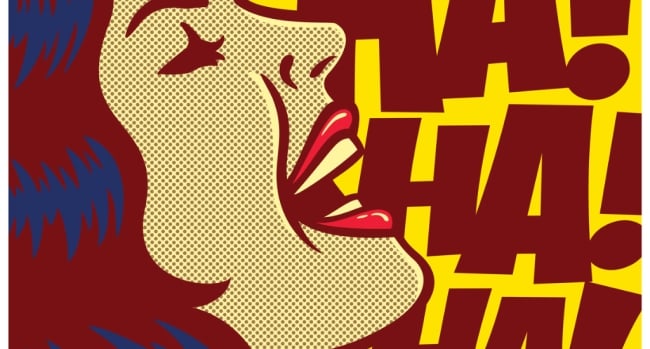You have /5 articles left.
Sign up for a free account or log in.

iStock
The letter is typical of those liberal arts colleges send to high school students who have done well on the PSAT.
"Which of the following would you expect to find at one of the best liberal colleges?" asks the letter, from Macalester College. It goes on to list qualities of which the college can boast: "academic challenge," "a global perspective," "1,257 miles of hiking trails," "active, politically aware students," "small classes and 10:1 student-faculty ratio." Mixed into the list are some qualities at Macalester than you won't find everywhere else. For example, bagpipes makes the list, as the college's Scottish heritage is evident in the tradition of using the instrument to announce that a professor has earned tenure.
![Photo of appeal letter from Macalester College, dated Jan. 19, 2018. Text says, “Dear [student], Which of these would you expect to find at one of the best liberal arts colleges? Academic challenge, indoor plumbing, countless study abroad opportunities, scholarly faculty who love to teach, a global perspective, bagpipes, a Bruker Dimension Edge Atomic Force Microscope, the meaning of life, active, politically aware students, United Nations flag flying over campus, 12,000 lakes of 10 acres or more nearby, a multitude of internships in nearly every field imaginable within a few miles, a commitment to community service, classmates from more than 90 countries, a beautiful new music and art complex, lots of high-tech “toys” in the science buildings, 2,000-plus brilliant yet humble students, 12 professors who walk their dogs through campus, a satellite imaging lab, true love, not one but two great cities, 1,257 miles of hiking trails, small classes and ten to one student-faculty ratio, sunshine 58 percent of the year and no precipitation 248 days a year, good food, attractive campus in a great neighborhood, the most rewarding four years of your life. Well, Macalester can’t promise you all of these -- after all, who can count on true love? And the meaning of life is still up for discussion. But Mac can promise that this is a great place to spend four years. It’s a college committed to a broad academic program in the liberal arts and sciences, with a long-standing dedication to internationalism, multiculturalism, and community service. We received your name from the College Board (the PSAT people). Although we don’t always believe everything they tell us, their information suggests that you would thrive at a challenging college like Macalester and I’m sure that’s true. If you’d like to learn more about the college, go to Macalester.edu. We’ll tell you more about our indoor plumbing (and other attributes)! Sincerely, Jeff Allen, vice president for admissions and financial aid. P.S. Not all our students are that humble. Actually, they’re pretty amazing and interesting people!](/sites/default/server_files/media/MacLetter.jpg) But including a few quirky things about a college is also par for the course in promotional materials. But some of the items on the list aren't quirks.
But including a few quirky things about a college is also par for the course in promotional materials. But some of the items on the list aren't quirks.
For example, the second item on the list is indoor plumbing, and the list also includes the meaning of life and true love. The letter goes on to admit that the latter two can't be guaranteed, but closes with an invitation to learn more about the indoor plumbing.
The letter has been used for several years now. While it is currently signed by Jeff Allen, the vice president for admissions and financial aid, the original author was a former admissions dean, Lorne Robinson.
Macalester is an institution where officials aren't afraid to poke fun at themselves. Back in 2010 President Brian Rosenberg made a video for Presidents' Day imagining that the day was meant to honor him as a college president and outlining the duties (real and imagined) of a college president.
But recruiting applicants is a serious business. Does humor work?
In an interview, Allen said that he thinks it does. He said he can't demonstrate conclusively that it attracts applicants, but many applicants (and parents) comment on it and say that the letter stands out, referencing it in subsequent discussions. (The letter, above, wasn't pitched as an article by the college, but was circulating on social media after an admissions professional somewhere else saw it when his child received one.)
And standing out matters, he said. Proud as Allen is of the fine qualities of Macalester (in addition to indoor plumbing), "the students who consider Macalester are also considering other amazing college and university options." That explains some of the serious items included. For instance, many liberal arts colleges can't claim, as St. Paul-based Macalester does, to be located near two cities. But it also explains the humor.
"It's probably not a letter that could be written for every institution," Allen said. And he believes that the kinds of students who will chuckle are those who might find, if they visit campus, the kind of place where they might want to enroll.
"Admissions Insider" interviewed a number of experts on marketing to prospective students, and they generally applauded the Macalester letter and the approach of using humor, though not everyone agreed. (The letter was developed without the help of anyone quoted below.)
John Maguire, chair of Maguire Associates, said humor "and a little bit of the unexpected" can go a long way in getting the attention of prospective students.
He started his admissions career at Boston College. There, he said, one of his early successes was a viewbook with the tagline "Boston College, not a college and not in Boston." (The college is a research university with numerous graduate and professional programs, and it is located in Chestnut Hill, outside Boston.)
"People laughed," Maguire said, and that led them to look at the rest of the viewbook. Buzz generated interest -- within a year, he noticed some of the promotional materials of rival Boston University started to feature the tagline "Boston University, in Boston."
 Elizabeth Scarborough Johnson, a partner at SimpsonScarborough, said that using humor "can lead to real wins." But she warns colleges of potential risks. She noted that comedians may think they have "a killer joke," only to see it bomb. "A college that uses humor in marketing has to be smart about it, and they have to be willing to respond to the fallout if the joke doesn’t fall exactly as it was intended."
Elizabeth Scarborough Johnson, a partner at SimpsonScarborough, said that using humor "can lead to real wins." But she warns colleges of potential risks. She noted that comedians may think they have "a killer joke," only to see it bomb. "A college that uses humor in marketing has to be smart about it, and they have to be willing to respond to the fallout if the joke doesn’t fall exactly as it was intended."
Good humor can attract attention and be embraced by alumni year after year, she noted. A favorite example of Johnson's is a poster created by Rose-Hulman Institute of Technology. The poster's tagline -- "Ski Terre Haute" -- is about an activity that would be very difficult in flat Indiana. Students and alumni love the poster.
Michael Stoner, president of mStoner Inc. (and an Inside Higher Ed blogger), said that "teens value humor and irony" in entertainment, YouTube and elsewhere. They may not be used to humor in college materials, Stoner said, but it can be effective.
In a recent survey of teenagers about college materials, respondents were particular positive in describing some materials as "witty and amusing" or "not so serious," Stoner said. This makes him think approaches like Macalester's may be effective.
Cautions
Mark Cunningham, executive vice president of Carnegie Dartlet, said humor may be a strategy to break out of what he sees as a big problem in marketing to prospective students. "Many colleges and universities have tried to be everything to everybody, and that has resulted in most institutions sounding the same to prospective students and their parents." As a result, he said, "a winning marketing strategy is getting away from the competitive herd."
But he said a humorous approach may be effective for some colleges and not others. "If a school’s authentic personality is to be fun and playful, then a marketing approach that incorporates these traits can be effective," he said. But Cunningham added that "if these traits do not fit with the personality of either the institution or its students, the marketing strategy can significantly miss the mark.”
Peter Farrell, managing director of EAB Enrollment Services, was the most skeptical of humor in seeking to reach prospective students. He said that it's something people "intuitively believe will work," but that isn't always the case. For starters, he said that it's important to remember that the target audience is typically two or more decades younger than those thinking up the humor.
Just taking a chance, he said, can be expensive. Buying a name from the College Board costs 42 cents. Costs for postage and production of materials bring the spend to $1 per name, and many colleges are sending materials to 50,000 or 100,000 names.
As a result, Farrell said, his approach is to "test obsessively," with small batches and different messages. In such testing, he said, outreach that has "a clear message of value" generally outperforms humor.
So Farrell agreed that pure promotion may not always work. But he said that these "messages of value" intrigue students. For example, material with the theme of "how to be admitted to your ideal college" or "what top students told us was important to their college search" have done very well -- better than pitches based on humor.




